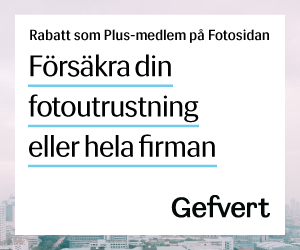Jag klipper texten...
Jag klipper in Minoltas text så vi vet att den finns kvar:
----------------------------
Dear All
I thought you might like to see a letter I received from Minolta regarding my query to them about primarily AF problems, and secondarily 100asa noise. It's very well written and explains the issues quite well, but I'd be interested to hear what the tech-heads think.
Thank you for your patronage.
Noodle
Letter begins...
Thank you for your patronage of the Minolta DiMAGE 7i digital camera. With regard to your first inquiry on AF speed, the DiMAGE 7i takes more time than film cameras to fucus on a subject in AF mode, due to difference in AF system between DiMAGE 7 and Maxxum/Dynax SLRs.
In general, the conventional film cameras (silver-halides) uses AF system called Phase Detection, while Video AF is widely used for DSCs.
The Phase Detection system, which is capable of obtaining defocus amount and achieves high speed AF operation, usually requires a large space between the optics and CCD to split through-the-lens light for distance calculation.
Thus, given priority for compactness, non-lens-replaceable DSCs are often equipped with Video AF system, which operates comparatively slower than the phase detection. DiMAGE 7's AF operates no inferior to other DSCs featuring Video AF.
On your second inquiry on noise reduction, we are pleased to explain our view on image production as well as replying to your inquiry.
Image production by the DiMAGE 7i is focused on being faithful to producing the appearance and texture description of the subject; they have been designed so as not to offer excessive processing on the camera side, including noise reduction, against image information from CCD.
As you may know, noise reduction function is necessary since there cannot be noise-free condition when the image is captured through CCD. In the meantime, the camera itself cannot distinguish 'noise' from 'precise information' which is often important to express texture of the image; excessive noise reduction may reduce 'precise information', which may ruin the texture of the image depending on the recording condition such as subjects, weather, brightness, shutter speed, etc.
For instance of the subject, plain and/or smooth subjects such as doll's face, walls, and blue sky would have little on excessive noise reduction, meanwhile, complicated and/ precise subjects with concavity and convexity in the itself, such as feathers, wrinkles, people and animals, would have more demerit on being ruined the texture of the image than the merit on noise reduction.
The DiMAGE 7i, therefore, apply to the noise reduction level to prevent the soaring of captured image.
On the other hand, it is related to viewing condition as well as recording condition whether the noise is distinctive or not. To view the captured image itself, there are such conditions as printing out or displaying the whole image on the monitor, meanwhile, we regard that it is not 'viewing the captured image itself' but 'reproduction of captured image' by way of retouching, that viewing 5M-pixel image on the monitor with magnification of 100% or more.
It is true that there are some noises left in the image captured by the DiMAGE 7i when you view with magnification of 100% or more on the monitor, in the meantime, we would greatly appreciate it if you would understand that the DiMAGE 7i are predetermined its noise reduction level aiming at enhancing texture and spatial effect of the captured image rather than the noises left, when you view the image by printed one or the whole image on the monitor.






